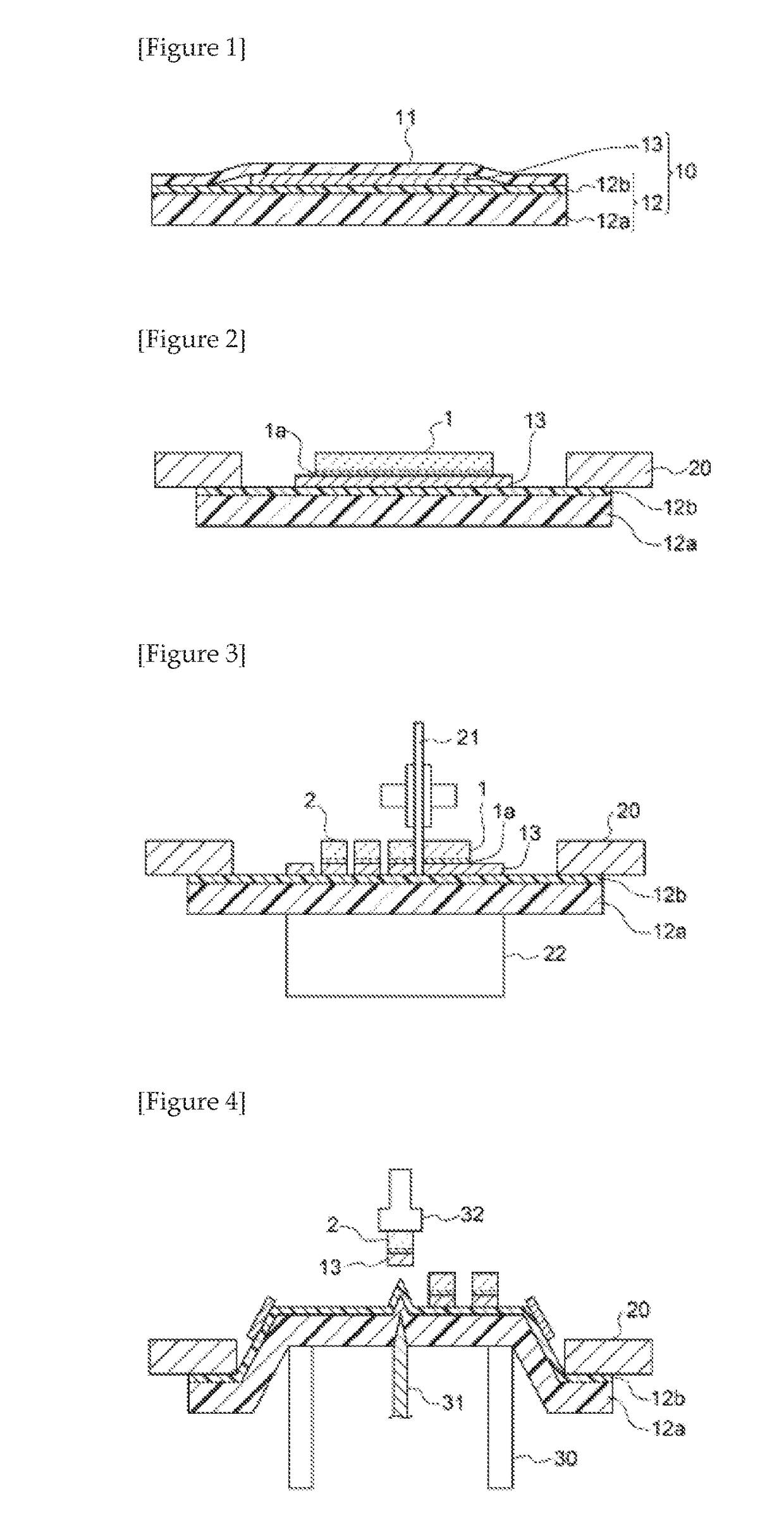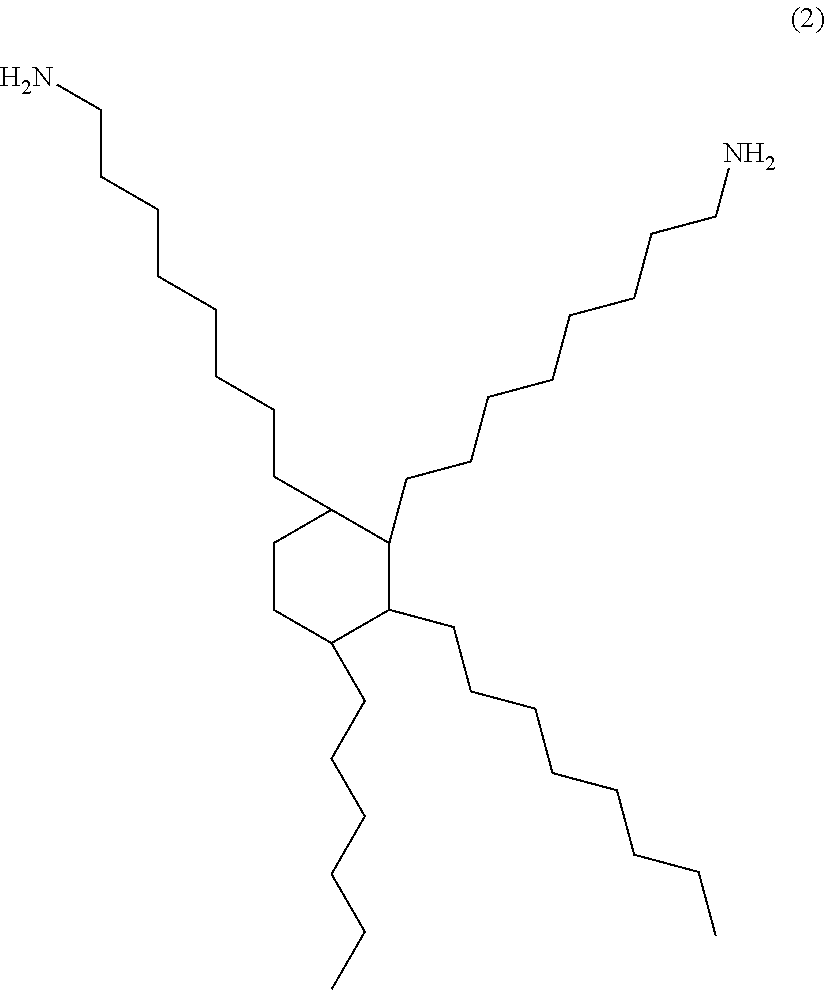Electrically conductive adhesive agent composition, and electrically conductive adhesive film and dicing-die-bonding film using the same
- Summary
- Abstract
- Description
- Claims
- Application Information
AI Technical Summary
Benefits of technology
Problems solved by technology
Method used
Image
Examples
examples
[0093]The present disclosure will be further explained in detail below based on examples. However, the present disclosure is not limited by the examples.
[0094]
[0095]Abbreviations for the raw materials used are as follows.
[Metal Particles (Q)]
[0096]Mixture obtained by mixing the first metal particle (Q1) with the second metal particle (Q2) in a mass ratio of 2:1
[0097]First Metal Particle (Q1)
[0098]Cu particle: fine copper powder, a product of Mitsui Mining & Smelting Co., Ltd., average particle size (D50): 5 μm
[0099]Second Metal Particle (Q2)
[0100]SnBi alloy particle: fine solder powder (Sn72Bi25), a product of Mitsui Mining & Smelting Co., Ltd., average particle size (D50): 7 μm
[0101]The average particle size (D50) of the metal particles was measured by a laser diffractometer (SALD-3100, product of Shimadzu Corp.).
[0102][Resin (M)]
[0103]Maleimide Resin
[0104]Mixture obtained by mixing BMI-3000 with, as a polymerization initiator, Perbutyl® O in a mass ratio of 100:5
[0105]BMI-3000: Bi...
examples 1 to 4
[0129]In Examples 1 to 4, electrically conductive adhesive agent compositions were obtained by mixing the materials shown in Table 1, among the aforementioned materials, so that the proportion of the metal particle (Q) would be 93.7% by mass, the proportion of the resin (M) would be 4.5% by mass, and the proportion of the flux would be 1.8% by mass.
PUM
| Property | Measurement | Unit |
|---|---|---|
| Temperature | aaaaa | aaaaa |
| Electrical conductivity | aaaaa | aaaaa |
| Molecular weight | aaaaa | aaaaa |
Abstract
Description
Claims
Application Information
 Login to View More
Login to View More - R&D
- Intellectual Property
- Life Sciences
- Materials
- Tech Scout
- Unparalleled Data Quality
- Higher Quality Content
- 60% Fewer Hallucinations
Browse by: Latest US Patents, China's latest patents, Technical Efficacy Thesaurus, Application Domain, Technology Topic, Popular Technical Reports.
© 2025 PatSnap. All rights reserved.Legal|Privacy policy|Modern Slavery Act Transparency Statement|Sitemap|About US| Contact US: help@patsnap.com



